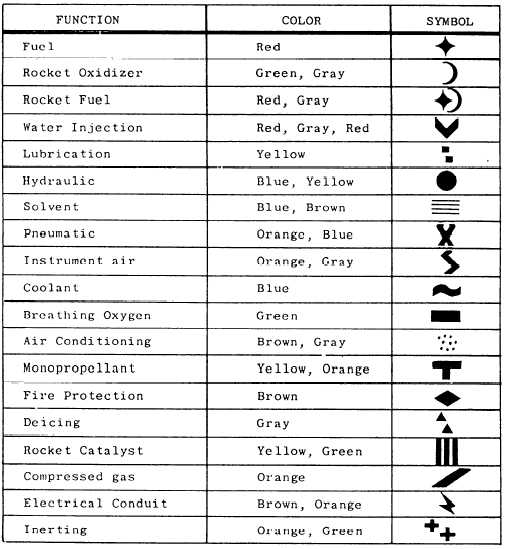(screwed, flanged, welded, and so forth) as well as
fittings, valves, gauges, and items of equipment.
When an item is not covered in the standards, the
responsible activity designs a suitable symbol and
explains it in a note.
Figure 5-10 shows some of the common piping
symbols used in piping prints. When a print shows
more than one piping system of the same kind,
additional letters are added to the symbols to
differentiate between the systems.
MIL-STD-101C established the color code used
to identify piping carrying hazardous fluids. It applies
to all piping installations in naval industrial plants and
shore stations where color coding is used. While all
valve wheels on hazardous fluid piping must be color
coded, the piping itself is optional. The following
colors are painted on valve wheels and pipe lines
carrying hazardous fluids:
Yellow — Flammable materials
Brown
— Toxic and poisonous materials
Blue
—
Anesthetics and harmful materials
Green
—
Oxidizing materials
Gray
—
Physically dangerous materials
Red
—
Fire protection materials
Fluid lines in aircraft are marked according
to MIL-STD-1247C, Markings, Functions, and
Designations of Hoses, Piping, and Tube Lines for
Aircraft, Missiles, and Space Systems. Figure 5-11
lists the types of aircraft fluid lines with the color code
and symbol for each type. Aircraft fluid lines are also
Figure 5-11.—Aircraft fluid line color code and symbols.
5-7

